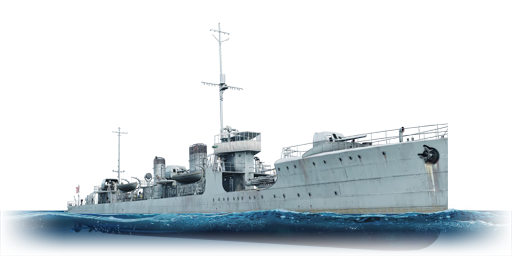

The Japanese destroyer Momi (樅, namesake: Japanese fir tree) was the lead ship of her class, notable for being the first Japanese destroyers armed with 533 mm torpedo tubes. Constructed at the Yokosuka Naval Arsenal as part of the 1918 Programme, she was launched in June 1919 and commissioned in December 1919. Momi's career was uneventful and she was stricken from the Navy List in April 1932, serving as an experimental hulk at Yokosuka until 1936 before being broken up at a later date.
Introduced in Update "Sons of Attila" in her 1930 configuration, Momi is notable for a very good primary armament and excellent torpedoes, though at the expense of below-average survivability, despite her armour over the engine spaces. She is best played in a highly aggressive manner, ambushing enemy vessels and dictating engagements thanks to her good mobility. Her main guns are of a calibre high enough to either cripple or outright destroy most motor torpedo boats with a single HE shell hit. However, she struggles to respond to aerial attacks, as her two 7.7 mm machine guns are grossly inadequate, even against the weakest biplanes.
| Ammunition | Type | Armor penetration (mm) at a distance: | |||||
|---|---|---|---|---|---|---|---|
| 1000 m | 2500 m | 5000 m | 7500 m | 10000 m | 15000 m | ||
| HE | 24 | 24 | 24 | 24 | 24 | 24 | |
| HE-TF | 24 | 24 | 24 | 24 | 24 | 24 | |
| SAP | 114 | 87 | 56 | 37 | 26 | 24 | |
| Belt | Belt filling | Armor penetration (mm) at a distance: | |||||
|---|---|---|---|---|---|---|---|
| 10 m | 100 m | 500 m | 1000 m | 1500 m | 2000 m | ||
| AP/T/AP/T | 9 | 8 | 7 | 6 | 5 | 4 | |
| AP/AP/AP/T | 9 | 8 | 7 | 6 | 5 | 4 | |
| IT/IT/IT/AP | 9 | 8 | 7 | 6 | 5 | 4 | |








Seakeeping |
|---|
Unsinkability | |
|---|---|
Firepower | ||
|---|---|---|